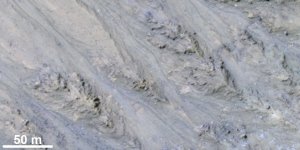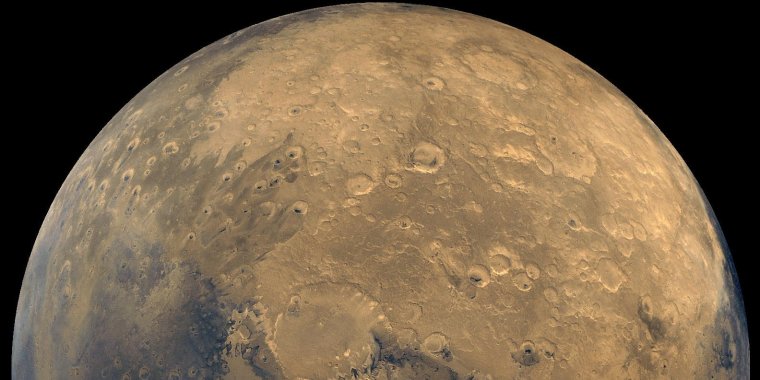| News / Science News |
Ancient Asteroid Impact Explains Martian Geological Mysteries
A colossal impact with a large asteroid early in Mars' history may have ripped off a chunk of the northern hemisphere and left behind a legacy of metallic elements in the planet's interior.
The origin and nature of Mars is mysterious. It has geologically distinct hemispheres, with smooth lowlands in the north and cratered, high-elevation terrain in the south. The red planet also has two small oddly-shaped oblong moons and a composition that sets it apart from that of the Earth.
New research by University of Colorado Boulder professor Stephen Mojzsis outlines a likely cause for these mysterious features of Mars: a colossal impact with a large asteroid early in the planet's history.
This asteroid -- about the size of Ceres, one of the largest asteroids in the Solar System -- smashed into Mars, ripped off a chunk of the northern hemisphere and left behind a legacy of metallic elements in the planet's interior. The crash also created a ring of rocky debris around Mars that may have later clumped together to form its moons, Phobos and Deimos.
Astronomers have long wondered about these features. Over 30 years ago, scientists proposed a large asteroid impact to explain the disparate elevations of Mars' northern and southern hemispheres; the theory became known as the "single impact hypothesis."
Mojzsis thought that by studying Mars' metallic element inventory, he might be able to better understand its mysteries.
The team studied samples from Martian meteorites and realized that an overabundance of rare metals -- such as platinum, osmium and iridium -- in the planet's mantle required an explanation. Such elements are normally captured in the metallic cores of rocky worlds, and their existence hinted that Mars had been pelted by asteroids throughout its early history.
Such an impact would also be expected to have generated a ring of material around Mars that later coalesced into Phobos and Deimos; this explains in part why those moons are made of a mix of native and non-Martian material. (Tasnim News Agency)
YOU MAY ALSO LIKE






